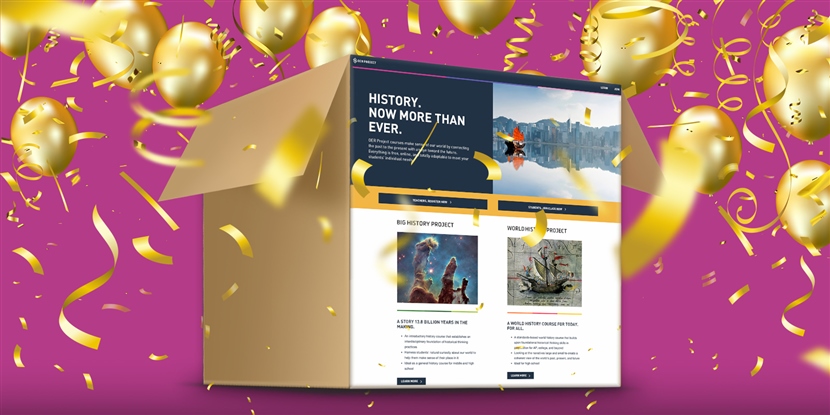Empowering Education: The Open Educational Resources (OER) Project
In the digital age, education is not confined to classrooms and textbooks. The internet has transformed the way we learn, breaking down barriers and making knowledge accessible to everyone. One ground-breaking initiative that embodies this spirit of accessible education is the Open Educational Resources (OER) Project. This project is not just a collection of online resources; it represents a paradigm shift in education, championing open access to knowledge and fostering inclusive learning opportunities for all.
oer project

1. Defining Open Educational Resources
Open Educational Resources (OER) refer to any educational materials that are freely accessible, openly licensed, and available for anyone to use, reuse, modify, and share. These resources can include textbooks, lecture notes, videos, quizzes, and other learning materials that support education. The beauty of OER lies in its ability to democratize education, making high-quality learning materials available to learners worldwide, regardless of their location or financial means.
2. The OER Project in Action
The OER Project is a collaborative endeavour involving educators, content creators, and institutions from around the globe. Its primary objective is to create, curate, and distribute OER for various subjects and grade levels. Through meticulous planning and dedicated efforts, the project ensures that the content meets high academic standards while being accessible to diverse learners, including those with disabilities.
Advantages of OER
3. Cost-Effectiveness:
Traditional textbooks and learning materials can be prohibitively expensive. OER significantly reduces these costs, making education more affordable and accessible.
4. Customizability:
Educators can adapt OER to suit the specific needs of their students. They can modify the content, adding local examples or culturally relevant references, thereby enhancing the learning experience.
5. Global Collaboration:
OER encourages collaboration among educators and institutions worldwide. Teachers can share their expertise, creating a rich tapestry of knowledge that transcends geographical boundaries.
6. Inclusivity:
OER promotes inclusivity by providing content in multiple formats, accommodating diverse learning styles and abilities. This inclusivity extends to learners from disadvantaged backgrounds, ensuring they have equal access to educational resources.
7. Continuous Improvement:
OER materials can be continually updated and improved based on feedback from educators and learners. This dynamic approach ensures that the content remains relevant and engaging.
8. Challenges and Solutions
While the OER project has made significant strides, it is not without its challenges. Copyright issues, quality assurance, and technological barriers are hurdles that need to be overcome. Collaborative efforts between governments, educational institutions, and the private sector can address these challenges. Implementing clear licensing agreements, investing in digital infrastructure, and providing training for educators are essential steps toward a more robust OER ecosystem.
Implementing an Open Educational Resources (OER) project involves careful planning, collaboration, and dedication. Here is a step-by-step guide on how to carry out an OER project:
9. Needs Assessment:
Identify the educational needs in your target audience. Understand the subjects, grade levels, and types of resources that are most needed. Engage with educators, students, and other stakeholders to assess the specific requirements.
10. Content Creation and Duration:
Develop a plan for creating and curating educational content. This could involve creating original resources, curating existing open content, or a combination of both. Ensure the content aligns with curriculum standards and is of high quality.
11. Copyright and Licensing:
Understand copyright laws and choose appropriate open licenses for the resources. Creative Commons licenses are commonly used for OER. These licenses clearly define how the content can be used, modified, and shared, ensuring legal clarity.
12. Platform Selection:
Choose a platform to host and distribute your OER. There are various platforms available, such as learning management systems, websites, or dedicated OER repositories. Consider user-friendliness, accessibility, and scalability when making your choice.
13. Quality Assurance:
Establish a quality assurance process to review the content. Involve educators and subject matter experts to ensure accuracy, relevance, and educational value. Regularly update the content to keep it current and engaging.
14. Teacher Training and Support:
Provide training and support to educators on how to effectively use OER in their teaching practices. This includes understanding licenses, integrating OER into lesson plans, and leveraging technology for enhanced learning experiences.
15. Community Engagement:
Foster a community around your OER project. Encourage educators to share their experiences, resources, and best practices. Create forums, workshops, or webinars where educators can collaborate and learn from each other.
16. Advocacy and Awareness:
Raise awareness about the benefits of OER among educators, students, parents, and policymakers. Advocate for policies that promote the use and creation of OER in educational institutions. Highlight the cost savings and educational advantages of OER adoption.
17. Sustainability Planning:
Develop a sustainability plan to ensure the longevity of your OER project. This could involve securing funding, building partnerships with educational institutions or organizations, and integrating OER into official educational policies.
18. Monitoring and Evaluation:
Establish a system for monitoring the usage and impact of your OER. Collect data on how educators and students are engaging with the resources. Use feedback to make improvements and demonstrate the project’s effectiveness to stakeholders.
19. Continuous Improvement:
OER projects should be dynamic and responsive. Continuously gather feedback, update content, and adapt to changing educational needs and technologies.
By following these steps and remaining committed to the principles of openness, collaboration, and inclusivity, your OER project can contribute significantly to enhancing educational access and quality for learners around the world.
Conclusion
The Open Educational Resources (OER) Project exemplifies the transformative power of open access to knowledge. By breaking down barriers and providing free, high-quality educational materials, this initiative is shaping a future where education knows no bounds. As we move forward, it is crucial for governments, educators, and society as a whole to support and nurture such projects, ensuring that education remains a fundamental right, accessible to all, regardless of their circumstances. Through the OER project, we are not just opening textbooks; we are opening minds, fostering innovation, and empowering the next generation to build a brighter, more educated world.
Leave a Reply